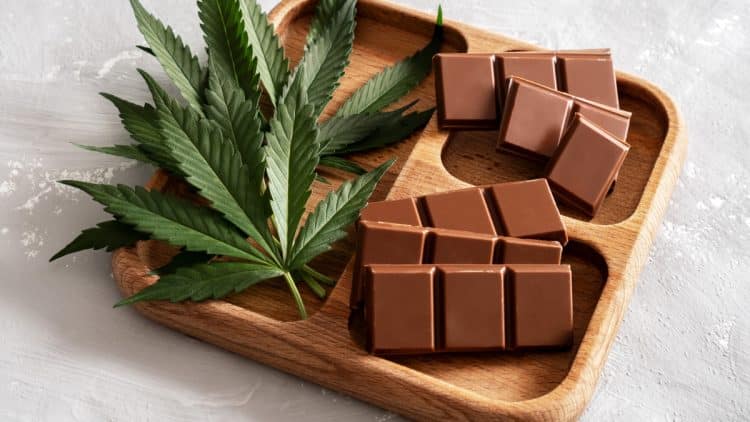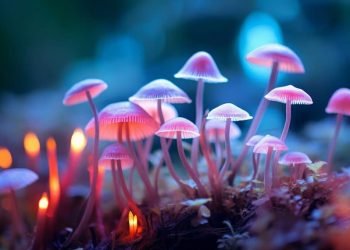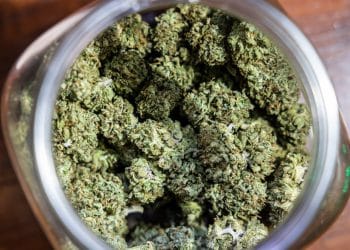From pain relief to improved memory, western medicine is starting to embrace plant based medicines as viable therapeutic options. This is something that has been accepted in Eastern cultures for centuries, as the medicinal use of cannabis extends back to 4000 BC in countries like China, India, and Tibet. [1] Prior to the modern prohibition, cannabis was often cultivated in eastern cultures extending from China to Ancient Greece and Rome.
At the same time, on the opposite side of the planet, Mesoamerican cultures were cultivating a different plant for its medicinal benefits: cacao beans, the precursor to chocolate. [2] The chocolate we have available today is not as psychoactive as cannabis, but its invigorating and euphoric effects still exist in the chocolate we eat today. In fact, the divergent opinions on these two products may not be warranted, as they both produce a chemical response in the brain and positive effects throughout the body. The question is, how similar are these responses, and how do they interact with each other within the body.
The History of Chocolate and its Uses
While the effects of cannabis are far more potent and obvious, it is worth evaluating the history and physiological responses of chocolate as it has evolved over the last several centuries. Evidence of chocolate use dates back to 600 BC in the Pre-Columbian Olmec, Inca, and Aztec civilizations. [3] Originally used to treat fatigue, fever, and weak hearts, it was brought to Europe in the 1500s by the Spanish Conquistador Hernán Cortes.
There, more than 100 medicinal uses were identified, including weight gain for emaciated patients, nervous system stimulation for apathetic patients, and improvement of digestive and kidney health. At the time, chocolate was mainly consumed as a warm drink, along the same lines as coffee. It wasn’t until 1847 when the British chocolate company Fry & Sons combined cocoa powder with cocoa butter and sugar to create “eating chocolate,” the first version of chocolate bars we know today. [4] While chocolate products slowly shifted from being seen as medicinal to food products, the therapeutic properties did not disappear.
Thanks to developments in neuroscience, it is possible to document some physiological and chemical responses that chocolate provides. One study found that the elevated levels of flavonoids may provide several benefits to the brain. [5] This includes anti-inflammation, neurocognitive improvements, and can help relieve intestinal discomfort. The study concludes these benefits stem from chocolate’s undocumented neuroprotective benefits that promote neurogenesis through neuro-modulatory proteins while simultaneously increasing blood flow. While this research is still in early stages, it may prove promising in treating conditions like dementia, strokes, and age related cognitive decline. All of this is promising, but it may prove especially beneficial when mixed with other therapeutic plants like cannabis.
Combining Chocolate and Cannabis
While the medicinal use of cannabis goes back thousands of years as well, the data of how it affects the brain has only recently been recorded. Similar to chocolate, the neurological benefits may provide a botanical solution for multiple physical and neurological conditions.
Cannabis has been shown to have anti-inflammatory, neuroprotective, and digestive benefits for its users. [6][7][8] All of these side effects compliment the advantages of consuming chocolate, but there is one important detail to note. While not only contributing to the wellbeing of the patient, cannabis supplements chocolate’s benefits by interfering with them. This is because the effects of the two products, while having similar in nature, stem from different reactions with the body and brain. Chocolate reduces inflammation by increasing blood flow, while cannabis slows white blood cell reaction and inhibits immune system proteins. [9][10] Both provide pain relief, but in different ways. Similarly, chocolate aids digestion by having a high fiber content, while cannabis relies on limiting stomach acid to minimize intestinal discomfort. [11][12]
The neuroprotective benefits are harder to identify, but chocolate’s flavonoids work on different parts of the brain than cannabinoids. [13][14] So while the evidence here is not definitive, the early results are promising. When taken together, this means that chocolate and cannabis have the potential to work together without interfering and inhibiting each other. This means that it may be possible for patients to develop a treatment strategy that can be customized to face their maladies on multiple fronts. All while using safer, natural alternatives to pharmaceutical products.
Building Effect Treatment Strategies
The logic follows that since chocolate and cannabis both treat various disorders in different ways, then their combined effect should produce better results. Luckily, data is already emerging to support this theory, but there is a caveat. [15] Neither chocolate nor cannabis are considered lethal in high doses, but both can cause significant discomfort when consumed in large amounts. It is important for patients who consume chocolate and cannabis together to be wary of how much they are ingesting. This may also vary by specific products, but effective measurements have been developed to determine exactly how much cannabis may be infused into various chocolate products. [16] With this in mind, this can also serve as an advantage. Not only do cannabis and chocolate run the risk of amplifying each other’s downsides, they also can increase the advantages. [17]
Research is still in its early stages, and it is important to recognize that the evidence to support this is only corollary at this point and not definitive. [18] That being said, cannabis and chocolate provide more than physical pain relief, but also mood elevation and can minimize each other’s downsides. An example of this would be chocolate covering cannabis’s taste or the lower stomach acid combating chocolate’s acidity. So while both of these plant usages originated from very different societies, they may serve to complement each other in several perfect ways.
References:
- Aggarwal, Sunil K., et al. “Medicinal use of cannabis in the United States: historical perspectives, current trends, and future directions.” Journal of opioid management 5.3 (2009): 153-168.
- Lippi, Donatella. “Sin and pleasure: the history of chocolate in medicine.” Journal of agricultural and food chemistry 63.45 (2015): 9936-9941.
- Dillinger, Teresa L., et al. “Food of the gods: cure for humanity? A cultural history of the medicinal and ritual use of chocolate.” The Journal of nutrition 130.8 (2000): 2057S-2072S.
- French, Michael. “Modernity in British advertising: selling cocoa and chocolate in the 1930s.” Journal of Historical Research in Marketing 9.4 (2017): 451-466.
- Sokolov, Alexander N., et al. “Chocolate and the brain: neurobiological impact of cocoa flavanols on cognition and behavior.” Neuroscience & Biobehavioral Reviews 37.10 (2013): 2445-2453.
- Gallily, Ruth, Zhannah Yekhtin, and Lumír Ondřej Hanuš. “The anti-inflammatory properties of terpenoids from cannabis.” Cannabis and cannabinoid research 3.1 (2018): 282-290.
- Iuvone, Teresa, et al. “Neuroprotective effect of cannabidiol, a non‐psychoactive component from Cannabis sativa, on β‐amyloid‐induced toxicity in PC12 cells.” Journal of neurochemistry 89.1 (2004): 134-141.
- Naftali, Timna, et al. “Cannabis for inflammatory bowel disease.” Digestive Diseases 32.4 (2014): 468-474.
- Kuebler, Ulrike, et al. “Dark chocolate attenuates intracellular pro-inflammatory reactivity to acute psychosocial stress in men: A randomized controlled trial.” Brain, behavior, and immunity 57 (2016): 200-208.
- Mukhtar, Amna H., and Nabiela M. Elbagir. “Effect of Cannabis sativa on hematological indices in rats and men.” Pak J Nutr 10 (2011): 313-316.
- Ortega, Nadia, et al. “Effect of fat content on the digestibility and bioaccessibility of cocoa polyphenol by an in vitro digestion model.” Journal of agricultural and food chemistry 57.13 (2009): 5743-5749.
- Abdel-Salam, Omar. “Gastric acid inhibitory and gastric protective effects of cannabis and cannabinoids.” Asian Pacific journal of tropical medicine 9.5 (2016): 413-419.
- Nehlig, Astrid. “The neuroprotective effects of cocoa flavanol and its influence on cognitive performance.” British journal of clinical pharmacology 75.3 (2013): 716-727.
- Lu, Hui-Chen, and Ken Mackie. “An introduction to the endogenous cannabinoid system.” Biological psychiatry 79.7 (2016): 516-525.
- Beal, Kerry. “Considerations in the addition of cannabis to chocolate.” Current Opinion in Food Science 28 (2019): 14-17.
- Yousefi‐Taemeh, Maryam, and Demian R. Ifa. “Analysis of tetrahydrocannabinol derivative from cannabis‐infused chocolate by QuEChERS‐thin layer chromatography‐desorption electrospray ionization mass spectrometry.” Journal of Mass Spectrometry 54.10 (2019): 834-842.
- De Bruijn, Suzanne EM, et al. “Explorative placebo-controlled double-blind intervention study with low doses of inhaled Δ9-tetrahydrocannabinol and cannabidiol reveals no effect on sweet taste intensity perception and liking in humans.” Cannabis and cannabinoid research 2.1 (2017): 114-122.
Iftikhar, Amna, et al. “Applications of Cannabis sativa L. in food and its therapeutic potential: From a prohibited drug to a nutritional supplement.” Molecules 26.24 (2021): 7699.












